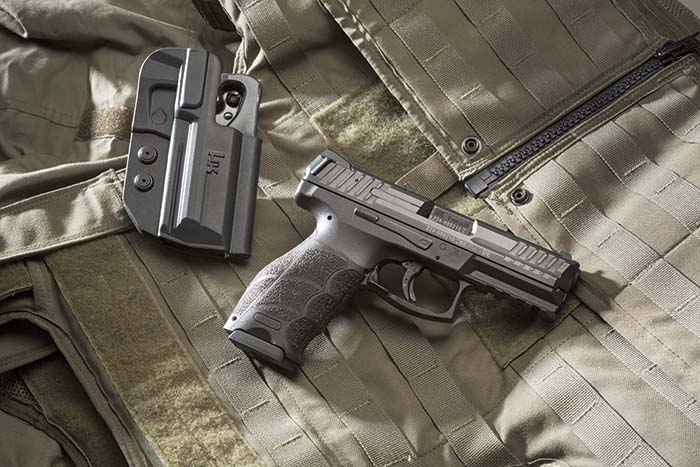The new Heckler & Koch VP9 pistol. (Heckler & Koch)
By Christopher R. Bartocci
Heckler & Koch has been on the forefront of firearms development throughout their history. This includes not only rifles but handguns as well. When most think of striker fired pistols with polymer frames they think of Glock pistols. There is no doubt that Glock has been the company who brought this system mainstream and has gone on to be the most popular handgun in the world for military, law enforcement and commercial use. However, there is some additional history that most are unfamiliar with and a firearm that not too many know about. The first polymer frame pistol was not manufactured by Glock; in fact Heckler & Koch predates Glock by about 12 years. Additionally, that same pistol was a striker fired pistol so you could say there was a pistol created in 1970 that had pioneered two of the major features that make Glock successful. That pistol was the Heckler & Koch VP70. The pistol was designed by Helmut Weldle and company co-founder Ales Seidel. Development of the pistol commenced in the late 1960s and was released for production in 1970.
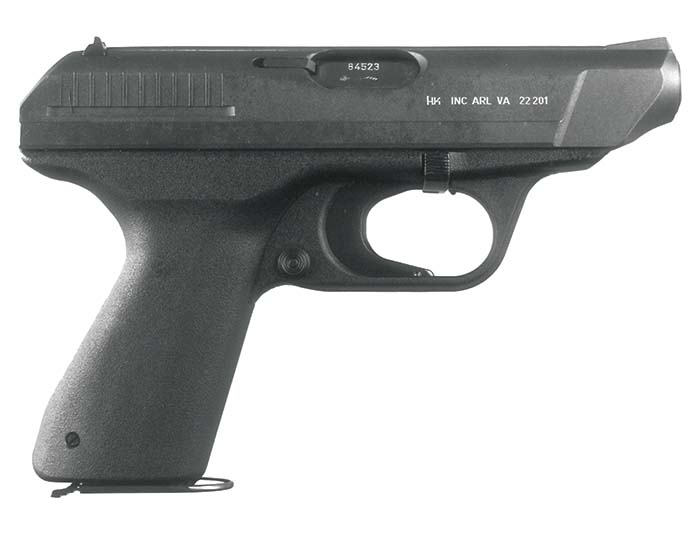
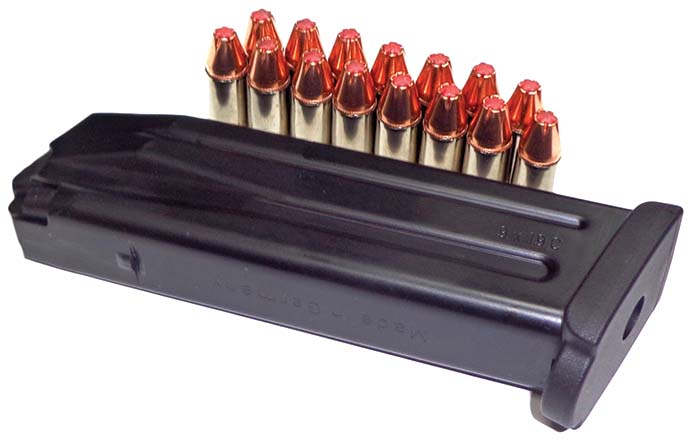
VP is an abbreviation for Volkspistole or Peoples Pistol and the 70 denotes the year the pistol went into production. H&K offered two models: the VP70M, the M means Militar (Military) and the VP70Z, the Z means Zivil (Civilian). The main difference is the military version accepted a stock that doubles as a holster and a stock assembly. The other thing that this stock incorporates is the mechanism permitting the VP70M to fire a 3 round burst at a blistering 2,200 rounds per minute. The change lever is mounted in the stock. The lever is operated through a toggle lever mounted on top of the stock. The VP70Z will not permit the installation of the stock.
The VP70 pistol has an overall weight of 34.5 oz and an overall length of 8.6 inches. The VP70M has an overall length with the stock attached of 21.5 inches. The barrel is 4.6 inches and the overall height of the pistol is 5.6 inches. The pistol is chambered in the 9x19mm NATO cartridge. However, a small lot was manufactured in 9x21mm IMI for the Italian market where the military 9x19mm caliber is restricted from private ownership or any other military standard cartridge.
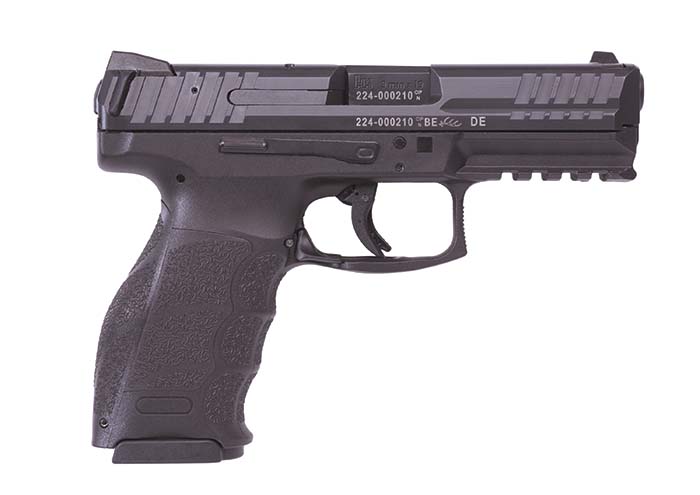
The frame is made from a polymer. It is fairly smooth and by today’s standards you would have put a rubber slip-over grip or some grip tape on it. This was a radical departure from the norm of the day when all military pistols were manufactured from steel frames. In fact it is safe to say that parallels can be drawn from the introduction of this pistol to the introduction of the AR-15. At the time the AR-15 was introduced, these aircraft age light weight alloys and polymers were too new and seen by many at the time as being flimsy and cheap compared to the wood and steel guns of the time. The VP70 was right there with the AR-15 in this space age look and synthetic materials. There is a manual safety on the pistol, a cross bolt safety located in the same location as a magazine release would normally be found.
The VP70 was also a striker fired pistol. The firing pin was drawn straight back and released. The pistol fired from a direct blowback operation; in other words there was no mechanical locking mechanism. By today’s standards, a 9x19mm caliber pistol has too much power behind it to work in this fashion. Some form of locking system would be used such as a Browning-type locking system. Direct blowback is commonly used on lower pressure cartridges such as the .22 Long Rifle, .32 Auto, .25 Auto and .380 Automatic. In order to delay opening of the slide too soon on a blowback pistol with a 9x19mm cartridge, the slide must be quite heavy leading to a larger and heavier pistol. Also, by bypassing a locking system, this enables the much higher 2,200 rounds per minute cycle rate as compared to a Glock 18 at 1,200 rounds per minute. The firing pin is made up of a firing pin with a spring located on front of the firing pin to work as an anti-slamfire mechanism. It basically prevents the firing pin from setting off the primer by the force/inertia of the forward movement of the slide during firing. Inside the rear of the firing pin is a firing pin spring guide rod, bushing and firing pin spring.
Perhaps the most direct cause of the pistol’s failure in the market was the double action only trigger pull. The trigger pull was outrageous: reported between 18 and 20 pounds. The trigger pulls straight back into the frame unlike the camming action of pistols such as Glock and HiPoint (low quality striker fired 9mm firing from direct blowback). To be honest, the trigger feels like that of a staple gun. This extremely heavy trigger made it very difficult to shoot accurately, especially under stress. This author can imagine that this was designed to mimic a revolver trigger. There has been an aftermarket spring made to reduce the trigger pull but unfortunately too little, too late. The Colt All American 2000 suffered a similar fate due to the outrageous trigger pull.
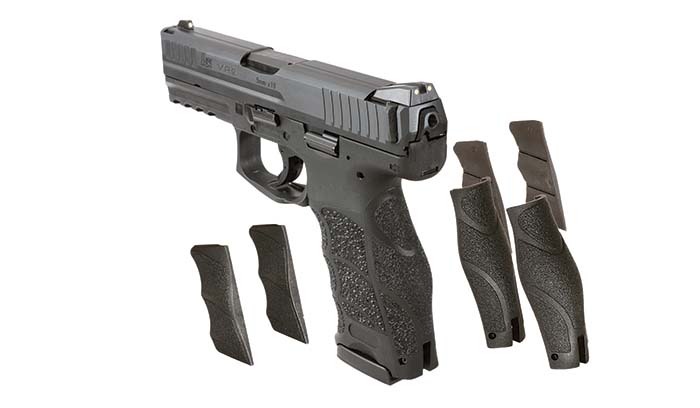
The barrel is fixed into the frame. The recoil spring slides over the barrel similar to that of a Walther PPK. The pistol’s barrel has several departures from the traditional H&K pistol barrels. The rifling is conventional land and grooves. The lands, however, are much deeper than normal. In fact, as the projectile passes down the bore, the bullet never catches on the grooves. Hot gas/pressure passes between the gap in the groove. This lowers the overall pressure inside the barrel permitting a lighter slide to be used with the direct blowback design. When examining a projectile fired from the VP70, you can visually see the scorching on the bullet between the land impressions.
The magazine looks like a cut down Uzi magazine. Cartridges are fed from both right and left side rather than one through the top like a Glock magazine. The magazine held 18 rounds of 9x19mm ammunition.
Although revolutionary in many ways, the VP70 was a failure. Some may say it was due to the unconventional new use of the polymer frame and others will say it was due to the extremely heavy trigger pull. The pistol went in to production in 1970 and was discontinued in 1989. Nearly 12 years after HK’s idea of a polymer frame, it would resurface and be perfected by Glock as well as a refined trigger mechanism. What is that saying: What is old is new?
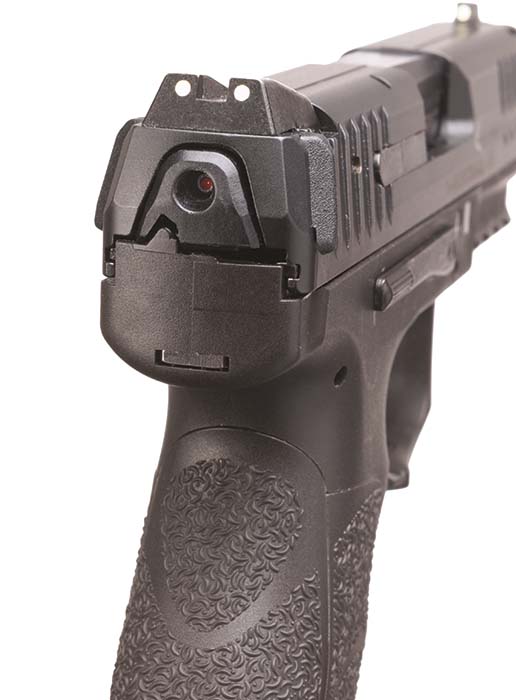
The New VP9
In June of 2014, Heckler & Koch introduced their first striker fired pistol since the VP70, the VP9. The first model is in 9x19mm with more calibers surely to come. According to H&K, they wanted to develop a new family of pistols that would compete with Glock and also be at a lower price point to make the gun more affordable in the U.S. market with a retail price of $719. This is not a new concept for H&K. They brought out the USP-series of pistols in 1994 under the same pretense as providing an affordable pistol to the U.S. market. Those pistols as well had a similar MSRP but two decades later the pistols now sell for more than $1,000. So the initial price of the VP9 will be $719 but we will wait a few years and see if the price is stable or it creeps up the same way as the USP-family of pistols did.
The VP9 takes a couple of features from other H&K pistols bringing them into one. The striker mechanism was taken from the VP70/P7. They took the frame of the P30 and added several new features to the VP9. Unlike the VP70, the VP9 does not fire from the direct blowback method of operation; it uses the Browning type, modified linkless locking recoil-operated system.
The 9x19mm caliber VP9 weighs in at 26.56 ounces. The empty magazine weighs 3.28 ounces. The length of the pistol is 7.34 inches with the barrel length being 4.09 inches. The sight radius is 6.38 inches with a height of 5.41 inches. The width of the grip will vary depending on which grip inserts are used. The steel magazine holds 15 rounds of 9x19mm NATO ammunition.
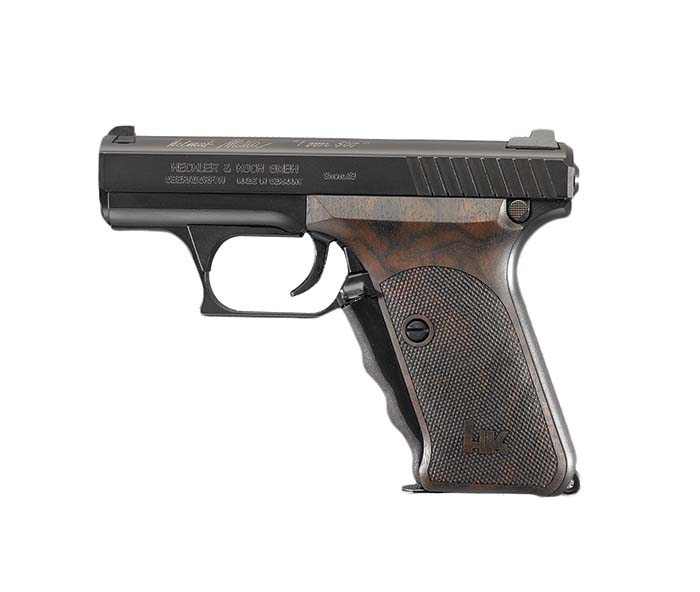
As previously stated, Heckler & Koch pioneered the polymer frame pistol with the VP70 in 1970 and then in 1993 they introduced their USP pistol, which was their second polymer frame pistol. The product line has expanded from the USP to the P30 series. The VP 9 frame is very similar in appearance to that of the P30. The replaceable back strap and side panels allow the pistol to be custom fit to any person’s hand. The texture of the grip is excellent and the ergonomic profile is very comfortable. Like all good military grade pistols, there is a lanyard loop. There is a higher grip saddle that translates into lower effective bore axis. This aids in faster target acquisition, less felt recoil and faster follow up shots. There is an ambidextrous slide release and with no manual safety: this makes a truly ambidextrous pistol. On the left side of the frame is the disassembly lever. The slide is retracted fully to the rear and locked open. The lever is turned 30°, the slide is pulled back enough to disengage the slide release and the slide is slid off of the front of the frame. On the front of the frame is an extended Mil-Std 1913 rail rated to handle tactical flash lights, laser sights and other accessories weighing up to 5.6 oz with no impact on performance. The first accessory rail introduced by H&K on the USP pistol was a proprietary rail not compatible with any other known rails. It was not until the HK P30 series that H&K replaced their proprietary rail with the Mil-Std 1913 rail.
The barrel is manufactured from cannon grade steel like all other H&K barrels. The cold hammer forged barrel is rifled with polygonal bore rifling which has become a trademark of Heckler & Koch. Unlike conventional button or broach cut rifling, there are no sharp lands and grooves. The smooth edges on the polygonal rifling do not wear like standard barrels. With the polygonal rifling, the bore is slightly tighter providing a better bullet-to-bore seal, increasing velocity. Additionally, due to no sharp edges, there is no copper being cut so the barrel is much cleaner as well. The polygonal rifling ensures a long service life. Similar H&K P30 barrels have been subjected to endurance tests of more than 90,000 rounds in 2010 and still shoot within specifications. Like any other polygonal-type rifling, the shooter cannot use lead/hard cast ammunition. The VP9 does not use the chamber fluting found in the MP5 and the P7 series of pistols.

The pistol is provided with a captive recoil spring that is easily removed and installed. The recoil spring is a flat spring offering the longest lasting recoil spring-type in the industry.
The slide has numerous features that you would come to expect from H&K. The slide is machined from a single piece of premium grade steel and finished with a high strength carbon-nitride corrosion resistant finish. There are serrations on the front of the slide, both sides that act as a gripping surface for actuation of the slide. There are also rear slide serrations. Added to the rear of the slide are patented charging supports. These extend slightly out both sides of the rear of the slide making for easier grasping of the slide in order to retract it. The rear sight is a low snag rear sight that is drift adjustable for windage. The front sight is low profile as well. Coming from the factory, the test and evaluation pistol came with non-radioactive luminescent three dot sights for quicker target acquisition. You may hit the front and rear sights with a flashlight and they will glow for some time. The factory does also offer tritium sights as well. The extractor also functions as a loaded chamber indicator. When loaded, the extractor protrudes outward where the top of the extractor is painted red. If no light is available, the shooter may feel with their right trigger finger the extractor protruding from the side of the frame.
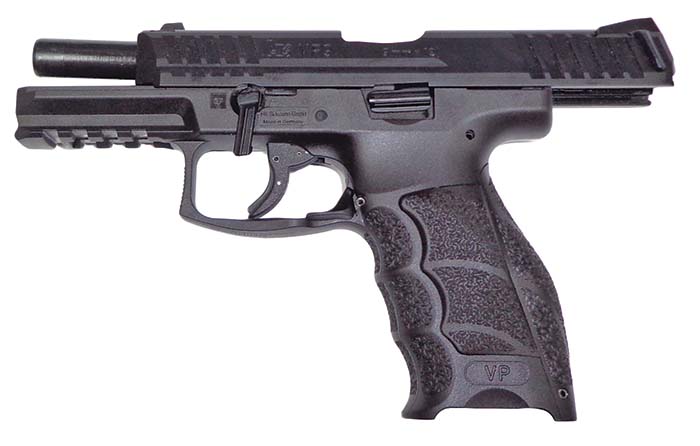
The VP9 uses a striker fired mechanism. This too premiered to the industry in the VP70. But also in the interim was use with the famous H&K P7 series pistol. The P7 went into production in 1976. The trigger mechanism was quite different from the VP70. The P7 was a “squeeze cock” pistol. When the pistol was carried, the striker was not in a cocked position. When the pistol was held, a cocking mechanism or squeeze cock grip located on the frontstrap of the pistol was squeezed into the frame. This retracted the striker to the cocked position. If the cocking mechanism was released, the pistol would decock safely. If the trigger was pulled the pistol would fire. When cocked, the striker would protrude from the rear of the pistol indicating it is cocked. When the cocking mechanism is released, the striker would move inside of the slide indicating the striker was no longer cocked. The similarities between the P7 and the VP9 stop in the fact they both are striker fired with a cocked indicator. The firing operating system is also different from the P7, unlike the blowback operated VP70 and the recoil operated linkless mechanism of the VP9: the P7 is uniquely gas operated – one of the few pistols in the world that are. The VP9 also has a passive firing pin block mechanism. The firing pin block halts the ability of the striker to be able to connect with the primer unless the trigger is pulled all the way to the rear. This is probably the most significant safety enhancement over the VP70. This prevents accidental or unintentional discharge from the pistol being dropped on its muzzle or back of the slide. This was a problem with M1911-type military pistols. If dropped from a minimum of 5 feet on the muzzle, the inertia from the firing pin was enough to set off the primer.
Perhaps the finest selling point of the VP9 is the trigger pull. The trigger does have the trigger safety latch similar to that of the Glock that prevents any rearward trigger movement unless the latch is pulled to the rear to unlock the rearward movement of the trigger. Unlike other striker fired pistols, the VP9 trigger has a shorter, light take up with more of a single action quality with a short positive reset. Most striker fired pistols give a more double action only feel to them. This is not really the case at all with the VP9. The trigger pull on this test and evaluation pistol broke at 5 1/4 pounds. The trigger has consistent pretravel and breaks consistently.
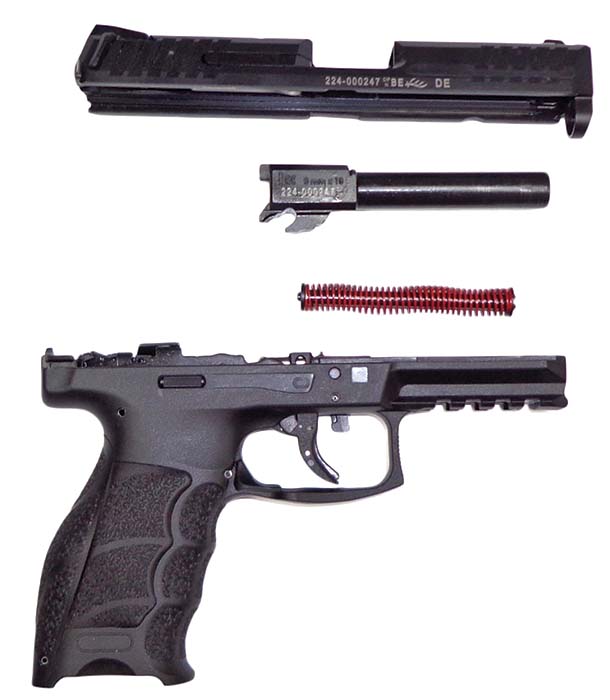
The magazines are similar to the ones found in some of the USP pistols and P30 family of weapons – manufactured from steel with a corrosive resistant finish. For law enforcement, military and those who maintain residence in unrestricted states, the VP9 has a capacity of 15 rounds of 9mm ammunition. For those in states that restrict magazine capacities, magazines are offered in a 10-round capacity. The magazines drop free from the pistol when the magazine release is depressed.
The pistol is covered by the standard Heckler & Koch limited lifetime warranty. This pistol is supposed to be cost effective with long term durability with its cost effectiveness noted when subjected to a total life cycle cost analysis.
The test and evaluation pistol was modified with the large front and back strap to cover the large size hands of the author. The pistol felt rather comfortable. The charging supports did make a difference in the ease of manipulating the slide. There is no doubt that with gloves or in any harsh conditions the slide would be easily manipulated. The slide serrations are easily manipulated with gloves or wet, muddy hands. The ability to tell from the striker hole in the frame if the pistol was in fact cocked was a positive feature. If you are to see red in the hole, you know you have a cocked pistol. The loaded chamber indicator was an excellent addition as well. Being used to Beretta and Glock pistols, it was nice to see this important feature added.
The trigger pull was excellent. It was noticeably shorter and smoother than any of the striker pistols out there. Not saying it was better compared to any particular striker fired pistol but it was different. Any pistol when shot enough, the user will become used to it and learn to manipulate it effectively and accurately. The VP9 certainly had high marks in this area. The short travel made rapid follow-up shots easy and effective.
For reliability the pistol was fired with 500 rounds of Pierce Ammunition 124gr Ball 9x19mm NATO caliber ammunition. There were no misfires or malfunctions. Pierce is a Buffalo-based New York company who has gained reputation for high quality ammunition. Pierce Ammunition is a full service loading facility with ballistic labs for cartridge development. They manufacture a wide variety of calibers as well as numerous loads per caliber. Additionally, several other types of high performance ammunition were tested for reliability. These included Hornady Critical Duty ammunition, Federal Hydra Shok and HST, CCI Gold Dot, Remington Golden Saber as well as Black Hills Ammunition 115gr Barnes TAC-XP in +P configuration. The pistol ran flawlessly regardless as to what ammunition was fed to it. Several types of +P and even some +P+ Winchester Ranger ammunition were also tested. Due to the strength of the polymer frame, higher pressure ammunition did not affect the durability or reliability of the pistol. With a combat pistol, whether it is law enforcement, military or self defense, the pistol must be able to fire anything it is given. The VP9 demonstrated reliability with a wide variety of popular military, law enforcement as well as commercial loads available in the market place today.
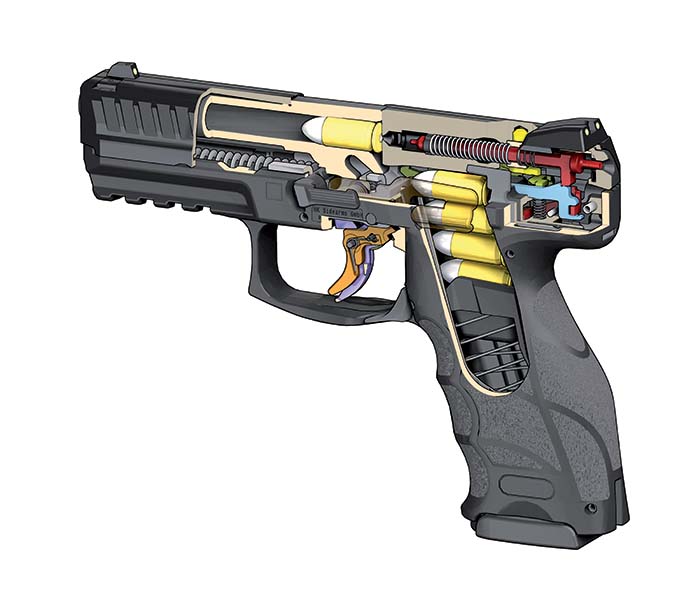
Accuracy was more than acceptable. The pistol was primarily fired at 15 yards off hand. Groups were consistently 2 inches. The trigger was exceptional for a striker fired pistol. This aided for sure with accuracy but also with rapid fire. The loaded chamber indicator was easy to use and functioned as advertised. The pistol did not have a magazine disconnect so this worked to its advantage as a combat pistol. Magazine changes were quick. The ambidextrous magazine is actuated and the magazine drops free from the pistol. The cocked indicator at the rear of the slide was certainly an interesting feature. However it was not found to be very useful due to the fact you are concentrating on the sights. When the trigger was pulled you could feel the striker being compressed, which basically gives you the same assurance. The serrations on the slide were very useful under adverse conditions and enabled the user multiple options to actuate the slide. The charging supports were a very nice addition as well.
Perhaps the most appreciated feature of this pistol was the replaceable back strap and side panels. Due to the Sasquatch size hands of this author, many pistols have a fairly small feeling. Having the ability to custom fit the pistol to the shooter’s hands is really a large benefit. The grip angle was comfortable and the distance the slide was from the “beaver tail” of the frame was also perfect. There was no way for the slide to catch the web of the hand of a shooter with large hands.
Will the HK VP9 make for some competition in the American LE market? Well, that is the real question. It appears to be a trend that H&K will bring out a new pistol for the American market (USP) with a emphasis on competitive pricing. The first year or so the processes are in fact competitive but then they begin to creep their way back up making their weapons cost prohibitive for most law enforcement agencies. In 1993, this author bought a brand new USP9 Variant 1 for $609.99 and today this exact same firearm sells for between $800 and $900 for a new USP9. Used ones can be had for the price of the pistol purchased in 1993/1994. Looking at some of the unique features, this pistol is certainly a contender for American LE market. There will be no real interest until the pistol is offered in .40 caliber, then we shall see. There is also a very large trend throughout law enforcement to go back to the old .45 Auto caliber cartridge.
The commercial market will greet the VP9 with open arms. As of this time, this is the most affordable pistol in the H&K line up. There are many shooters out there who really would like to own a H&K pistol but it is way out of their budget. Like with the law enforcement market, I expect the 9x19mm variation to have limited interest but the .40 whenever it comes will be the top seller followed by the .45 Auto variation when it comes available. This author is sure that eventually the market will see many additions to this family of weapons including compact versions. The VP family of pistols will become competition for the Glock series and Smith & Wesson M&P series pistols. Only time will tell if the new H&K pistol will defeat that proven family of weapons.
| This article first appeared in Small Arms Review V19N2 (March 2015) |



